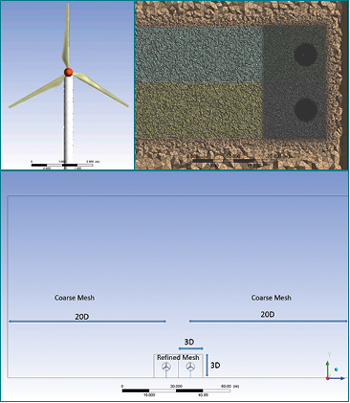 Novel Approach for Modelling Wake Interaction Using Reduced Computational Resources
Novel Approach for Modelling Wake Interaction Using Reduced Computational ResourcesThe layout of a wind farm affects not only the total output power but also the lifetime of the wind turbine components. This work is intended to establish a computational framework with which to investigate wind farm layout. At first, a wind turbine numerical model based on computational fluid dynamics (CFD) was validated using wind tunnel experimental data from the literature for the wake velocity flow field (MEXICO Experiment). The physical domain of the validated model was adapted and extended to include the far-wake modelling. The numerical approach implemented allowed efficient model wake interaction effects between rows in a wind farm with reduced computational costs. The capability of the proposed CFD model was shown to be consistent when compared with field data and kinematic model results, presenting similar ranges of wake deficit. The model is ready for engineering applications related to wind farm modelling, considering wake interaction effects between wind turbine rows.
By Rafael Valotta Rodrigues and Corinne Lengsfeld, University of Denver, USA